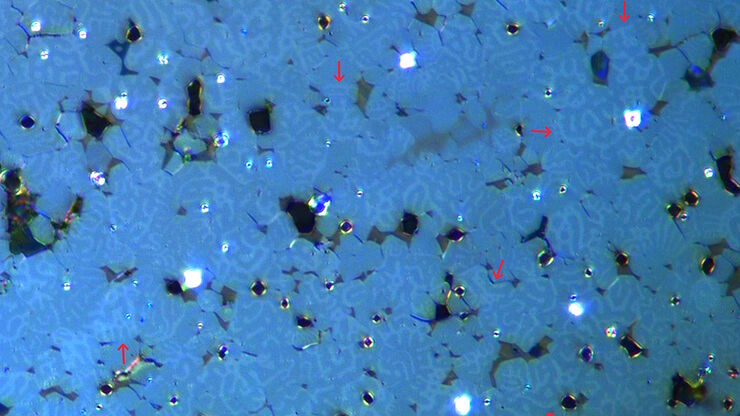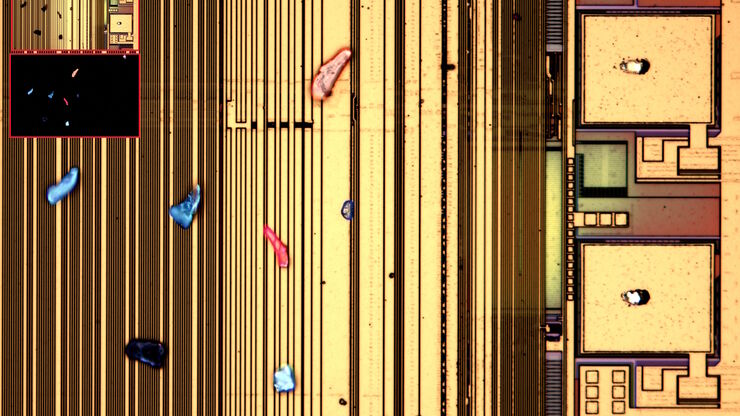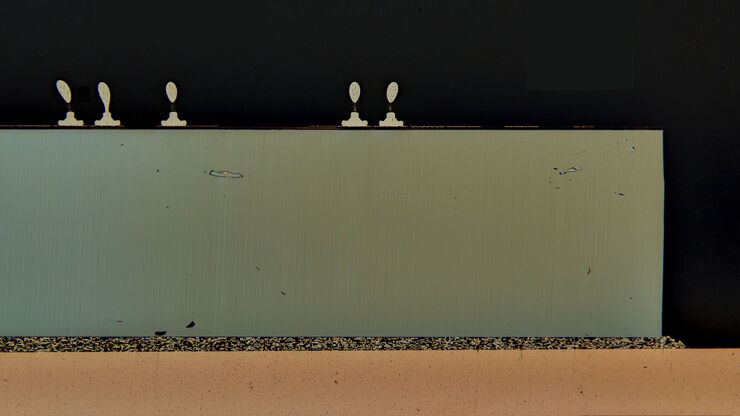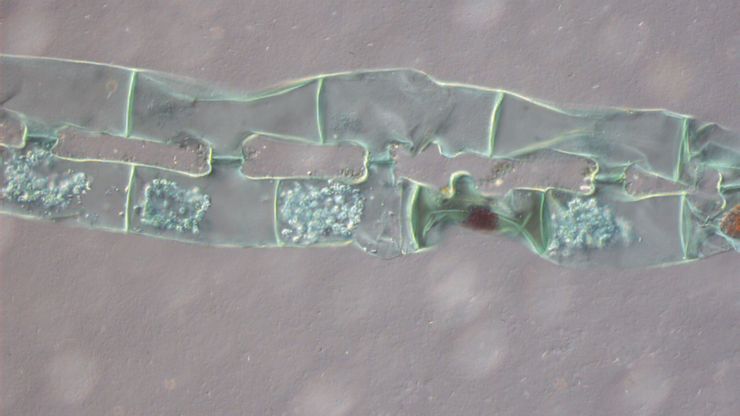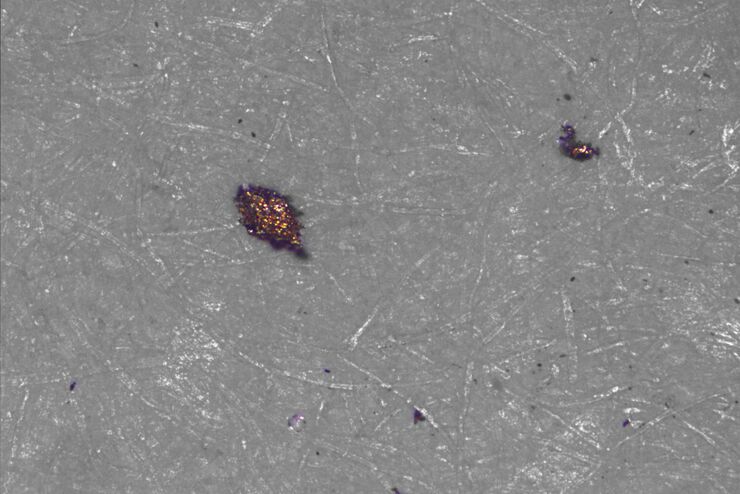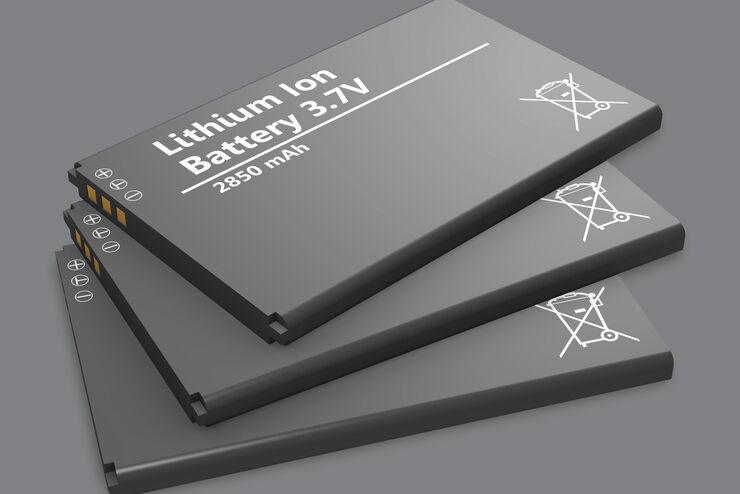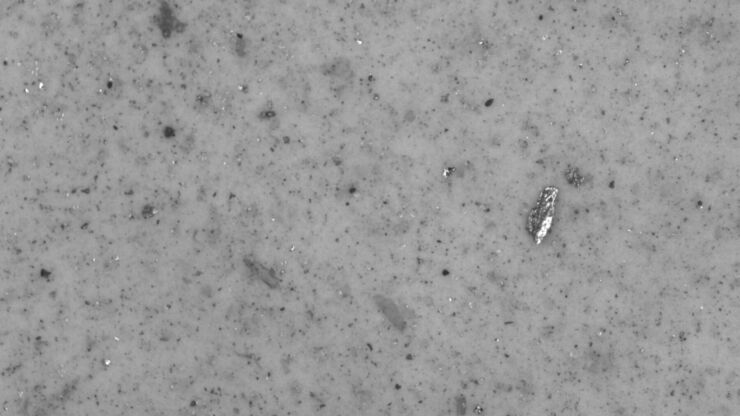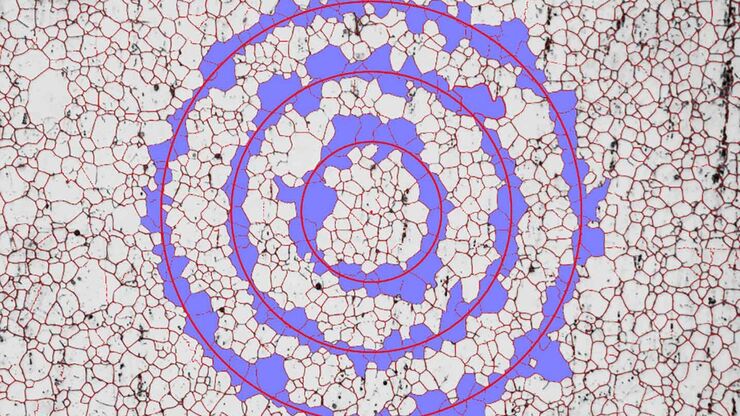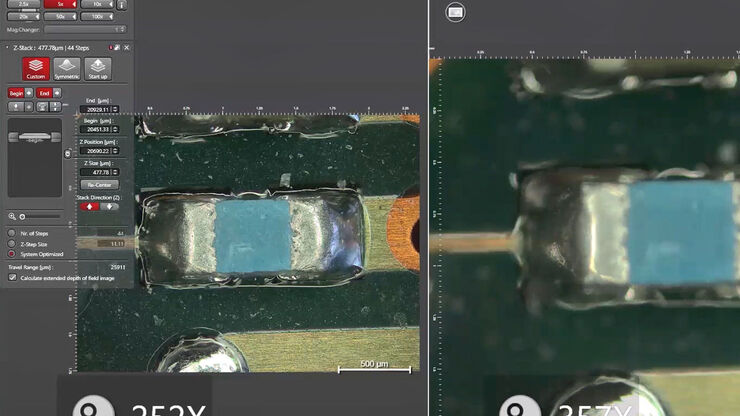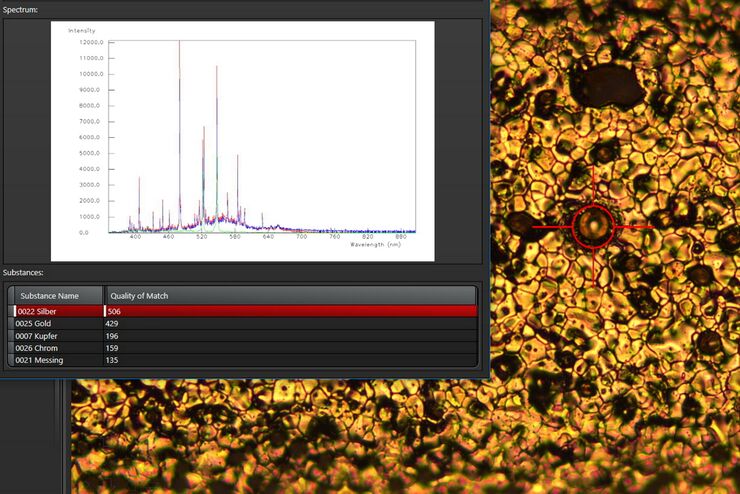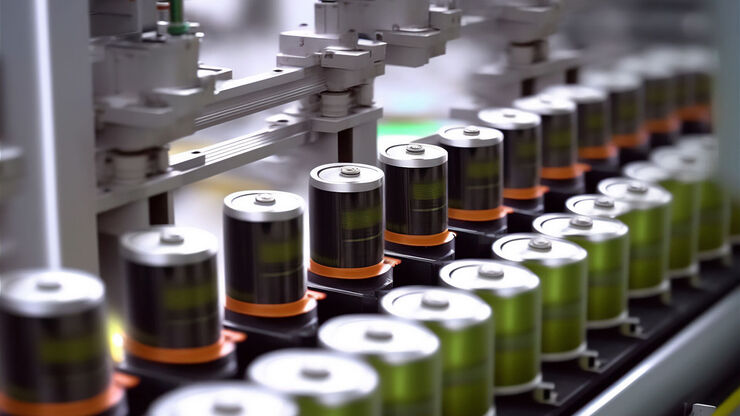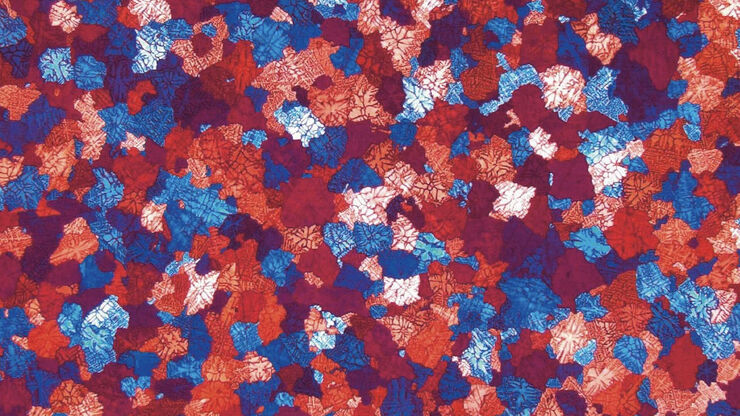Leica DM4 M & DM6 M
Aufrechte Mikroskope
Lichtmikroskope
Produkte
Startseite
Leica Microsystems
Leica DM4 M & DM6 M Aufrechte Materialmikroskope
Alles eingestellt und gespeichert
Lesen Sie unsere neuesten Artikel
Rapidly Visualizing Magnetic Domains in Steel with Kerr Microscopy
The rotation of polarized light after interaction with magnetic domains in a material, known as the Kerr effect, enables the investigation of magnetized samples with Kerr microscopy. It allows rapid…
6-Inch Wafer Inspection Microscope for Reliably Observing Small Height Differences
A 6-inch wafer inspection microscope with automated and reproducible DIC (differential interference contrast) imaging, no matter the skill level of users, is described in this article. Manufacturing…
Visualizing Photoresist Residue and Organic Contamination on Wafers
As the scale of integrated circuits (ICs) on semiconductors passes below 10 nm, efficient detection of organic contamination, like photoresist residue, and defects during wafer inspection is becoming…
Key Factors for Efficient Cleanliness Analysis
An overview of the key factors necessary for technical cleanliness and efficient cleanliness analysis concerning automotive and electronics manufacturing and production is provided in this article.
Structural and Chemical Analysis of IC-Chip Cross Sections
This article shows how electronic IC-chip cross sections can be efficiently and reliably prepared and then analyzed, both visually and chemically at the microscale, with the EM TXP and DM6 M LIBS…
Differential Interference Contrast (DIC) Microscopy
This article demonstrates how differential interference contrast (DIC) can be actually better than brightfield illumination when using microscopy to image unstained biological specimens.
Factors to Consider for a Cleanliness Analysis Solution
Choosing the right cleanliness analysis solution is important for optimal quality control. This article discusses the important factors that should be taken into account to find the solution that best…
Effiziente Partikelzählung und -analyse
Dieser Bericht befasst sich mit der Partikelzählung und -analyse unter Verwendung der optischen Mikroskopie bei der technischen Sauberkeitsanalyse von Teilen und Komponenten. Die Partikelzählung und…
Quality Control Under the Microscope
Fast-rising demand for electric vehicles is one of the market’s main drivers, but there are other hotspots of growth, including the rise in renewable energy installations, such as photovoltaic panels,…
Technische Sauberkeit von Automobilkomponenten und -teilen
In diesem Artikel werden die ISO-Norm 16232 und die VDA 19-Richtlinien erläutert und die Verfahren zur Partikelanalyse kurz zusammengefasst. Diese liefern wichtige Kriterien für die Sauberkeit von…
How Industrial Applications Benefit from Fluorescence Microscopy
Watch this free webinar to know more about what you can do with fluorescence microscopy for industrial applications. We will cover a wide range of investigations where fluorescence contrast offers new…
Challenges Faced When Manually Rating Non-Metallic Inclusions (NMIs) to Determine Steel Quality
Rapid, accurate, and reliable rating of non-metallic inclusions (NMIs) is instrumental for the determination of steel quality. This article describes the challenges that arise from manual NMI rating,…
Inverted Microscopes for Grain Size Analysis: Three Factors to Consider
Microscopic steel grain size analysis is useful in determining the quality of steel alloys for a given purpose such as building bridges vs railroad rails. This webinar will describe the preparation of…
Top Issues Related to Standards for Rating Non-Metallic Inclusions in Steel
Supplying components and products made of steel to users worldwide can require that a single batch be compliant with multiple steel quality standards. This user demand creates significant challenges…
Rate the Quality of Your Steel: Free Webinar and Report
This webinar and report describe optimal microscopy solutions for rating steel quality in terms of non-metallic inclusions and reviews the various international and regional standards concerning…
Metallography – an Introduction
This article gives an overview of metallography and metallic alloy characterization. Different microscopy techniques are used to study the alloy microstructure, i.e., microscale structure of grains,…
How to Adapt Grain Size Analysis of Metallic Alloys to Your Needs
Metallic alloys, such as steel and aluminum, have an important role in a variety of industries, including automotive and transportation. In this report, the importance of grain size analysis for alloy…
How To Create EDOF (Extended Depth of Focus) Images
Watch this video to see how you can rapidly record sharp optical microscope images of samples with a large height variation. This is done with the optional Extended Depth of Focus (EDOF) function of…
See the Structure with Microscopy - Know the Composition with Laser Spectroscopy
The advantages of a 2-in-1 materials analysis solution combining optical microscopy and laser induced breakdown spectroscopy (LIBS) for simultaneous visual and chemical inspection are described in…
Batterieherstellung
Die Batterieherstellung stellt mehrere wichtige Herausforderungen in Bezug auf die Inspektion dar. Es werden Lösungen für die Probenvorbereitung und die mikroskopische visuelle und chemische Analyse…
Metallographie
Metallographische Mikroskope von Leica sind für die Mikrostrukturanalyse von Metallen, Legierungen und sonstigen Materialien optimiert.
Fields of Application
Automobilindustrie und Transport Industriemikroskope
Leica ist Ihr zuverlässiger Partner für Bildgebungslösungen, die Ihnen zu einem Wettbewerbsvorteil verhelfen können. Mit unseren intelligenten Mikroskopsystemen können Sie sich voll darauf…
Bewertung der Stahlqualität
Eine gesteigerte Effizienz bei der Bewertung nichtmetallischer Einschlüsse erlaubt Stahllieferanten und Fertigungsunternehmen, die Stahlqualität in kürzerer Zeit zu verifizieren, um zuverlässige…
Forensik
Leica Microsystems bietet ideale Lösungen für jeden dieser Schritte – von der ersten makroskopischen Betrachtung, über mikroskopische Analyse und forensischen Vergleich, bis zur zeitsparenden…
Metallographie
Metallographische Mikroskope von Leica sind für die Mikrostrukturanalyse von Metallen, Legierungen und sonstigen Materialien optimiert.
Technische Sauberkeit
For industrial and electronics manufacturers as well as non-regulated pharma applications, solutions for an efficient technical cleanliness offer significant advantages.
Mikroskope für Materialanalysen
Die Materialanalyse erfordert Mikroskoplösungen für die Bildgebung, Messung und Analyse von Merkmalen in einer Vielzahl von Materialien wie Metalllegierungen, Halbleitern, Glas und Keramik sowie…
Märkte für industrielle Mikroskopie
Maximale Betriebszeit und effizientes Erreichen von Zielen helfen Ihnen, Ihr Ergebnis zu verbessern. Mit den Mikroskoplösungen von Leica Microsystems erhalten Sie Einblicke in kleinste Probendetails…
Metallindustrie
Leica Mikroskop-Lösungen für die Metallindustrie sind nützliche Werkzeuge, um die Qualität von Werkstoffen zu beurteilen und die Einhaltung relevanter Normen sicherzustellen.
Batterieherstellung
Die Batterieherstellung stellt mehrere wichtige Herausforderungen in Bezug auf die Inspektion dar. Es werden Lösungen für die Probenvorbereitung und die mikroskopische visuelle und chemische Analyse…
